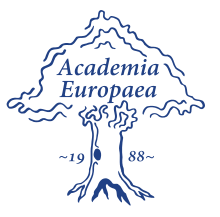Speaker
Prof.
József Gyulai
Description
At the dawn of integrating transistors on a single chip – as G. Moore predicted and to fortune of academics – it was necessary to apply ideas from solid state physics and chemistry. Later, atomic scale precision of preparation techniques became critical. Today, again physics is coming, but at level of quantum physics. On leave from Eastern Europe, my first encounter with ion beam techniques occurred at Caltech when working as post-doc in the group of Prof. J.W. Mayer from 1969 on. First personal contribution was how depth-dependent chemical composition can be extracted from Rutherford Backscattering and Channeling spectra (RBS+C). Back to Hungary, establishment of a new facility on ion implantation in semiconductors and on nuclear analytical techniques was the task of a new group at the ‘that-time’ Central Res. Inst. of Phys., KFKI, where I’ve been invited to join. Later, an NSF-supported Caltech-KFKI exchange program involving Mayer’s and Gyulai’s group made the Budapest group accepted in international community. This joint group non-negligibly contributed to acceptance of ion implantation by the industry, thus, to fulfillment of ‘Moore’s Law’ by 1) proving that as substrate (100)-oriented silicon is preferential not only for Si-SiO2 interface quality, but for better regrowth of implantation defects, too (1975, contribution to paradigm change of silicon crystal industry), and 2) by proposing the so-called “pre-amorphisation” technique (Si or Ge ion amorphisation of the substrate surface, followed by implantation of dopants into this layer, finally, proper annealing leading to desired structure; main contribution of our L. Csepregi, 1978). This technique is still integral part of industrial practice. Experience gained in the US, led to another decade long cooperation with Institut für Integrierte Schaltungen, Fraunhofer IIS-B, Erlangen. The Budapest group also excelled in operating the region’s only semiconductor production line, now concentrating on MEMS, and in numerous SW programs and solutions in the field of ion beam analysis.
An “excursion” of ours in the nineties to study swift ion irradiation led to unexpected discovery of formation of carbon nanotubes (CNT) from impact crater when noble gas ions of some hundred MeV impinge on the surface of Highly Oriented Pyrolytic Graphite. This result directed our interest toward nanoscience, just a year after carbon nanotubes were discovered. All this, led to successes of the group headed at present by L. P. Biró and L. Tapasztó, Member ASAE, also in studies of 2D materials (ref. Burgen Scholar talk of P. Vancsó, this conference).
Primary author
Prof.
József Gyulai

